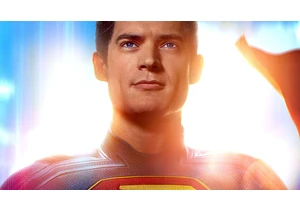Last July, Slack unveiled a new real-time collaborative feature called Huddles. It offered audio-only conferencing optimized for informal, on-the-fly conversations—and felt like manna for anyone who was weary of video conferencing via Zoom and similar services.
Slack users greeted Huddles enthusiastically, adopting them more rapidly than any new feature in the service’s history. And now, at Slack’s Frontiers conference, the company is announcing that Huddles are getting a major upgrade. Currently in testing and scheduled to reach general availability this fall, the new version will let users turn on their webcams and see each other during a Huddle—an addition that felt inevitable from the start.
But don’t take that as a sign that Huddles are evolving into head-to-head competition for Zoom or Google Meet. Tamar Yehoshua, Slack’s chief product officer, says that Huddles remain audio-first, with video as an optional extra. The company doesn’t want it to overwhelm the experience or leave anyone feeling self-conscious.
“There’s a lot of social pressure to turn on your video when you’re in a video meeting,” she explains. “So we want to reduce that and be able to just have an audio call. Only if you need the video do we turn on the video. And it’s going to be on a small screen unless you make it bigger.”


While it will be possible for more stuff to be going on in a Huddle, the fact that it’s happening inside Slack will still be core to the concept. In fact, each Huddle will have its own dedicated Slack messaging thread on the right side. You’ll be able to chat and share links and files while the Huddle is in progress. And everything will remain in the channel or direct-messaging conversation where the Huddle originated, preserving it for future reference.

“Zoom is for scheduling a meeting with a large group of people where you’re presenting to them,” she says. Though she didn’t point them out to me specifically, Zoom is decked out with features, such as the waiting room for attendees, that add complexity and formality even if you’re just trying to have a quickie conversation with a couple of colleagues.
Meanwhile, Huddles—which have a 50-person limit per session—are meant to lower the barriers for smaller teams who want to segue from typing in Slack to collaborating via audio, video, and/or screen sharing. According to Yehoshua, the median length of Huddles in their original audio form has been 10 minutes, suggesting that they may be a more efficient means of communication than formal video conferences blocked out in half-hour or hour-long chunks.
Long ago, it became clear that Slack made a strategic mistake by not incorporating full-blown Zoom-like capability. (By contrast, its archival, Microsoft Teams, chose to take on Zoom directly and has been doing so successfully and ambitiously.) Still, Huddles, even in their audio-only form, have been the best thing to happen to Slack in years.
Yehoshua says preserving the lightweight feel of Huddles remains a priority even as more functionality is added. If the company pulls that off, Huddles could become an even more appealing respite from Zoom’s overload—and that would be at least as worthy a feat as replacing it.
Chcete-li přidat komentář, přihlaste se
Ostatní příspěvky v této skupině

For search and rescue, AI is not more accurate than humans, but it is

The new must-have pet accessory? A concrete slab.
On #CatTok, videos are racking up views as cat owners bring slabs into their homes, set them down, and watch their beloved pets sniff, l


OpenAI is rolling out a new AI agent within ChatGPT that can browse th

Mark Zuckerberg and current and former directors and officers of Meta Platforms agreed on Thursday to settle claims seeking $8 billion for the damage they allegedly caused the company by allowing

Welcome to AI Decoded, Fast Company’s weekly newsletter that breaks down the most important news in

Holders of the digital tokens issued by World Liberty Financial, one of the
